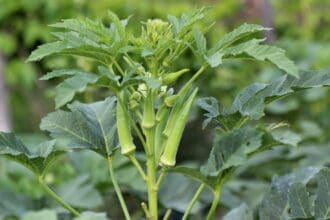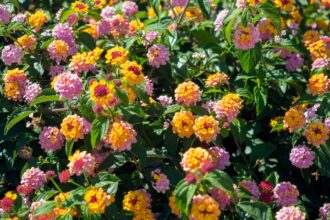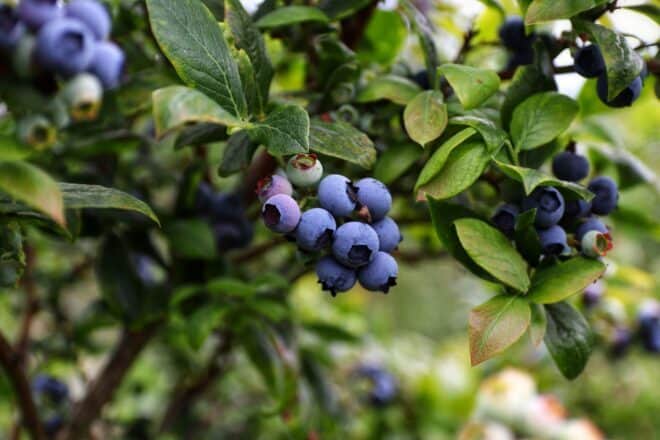
via: Unsplash / Mario Mendez
Want to know how to plant blueberries?
Growing blueberries in pots may seem like a difficult task. Thankfully, I know how to start a garden. As a gardening expert, I have been published numerous times on Constant Delights, so I can teach you all about growing blueberries.
Ready? Let's begin.
Contents
Blueberries versus Bilberries: 3 Differences

via: Unsplash / Sneha Cecil
Do you know the difference between blueberries and bilberries? They may seem similar, but they have some key differences that make only one of the two more suited for planting. I'll list the biggest differences here.
1. Cultivation

via: Unsplash / Richard T
Blueberries can be planted and cultivated normally, but bilberries are exclusively found in the wild. Bilberries are basically impossible to cultivate, so you can only grow blueberries.
2. Color

via: Unsplash / Robert Katzki
The two kinds of berries may have similar colors on the outside, but the inner flesh's color differs once you get past the skin. Blueberries have greenish-blueish flesh, while bilberries have a stark red color for their flesh.
3. Antioxidants level

via: Unsplash / Gemma Evans
Bilberries have four times the amount of antioxidants compared to blueberries. It is rich in various anthocyanins that blueberries don't have. Bilberries have the most anthocyanins of any berry!
How To Grow Blueberries
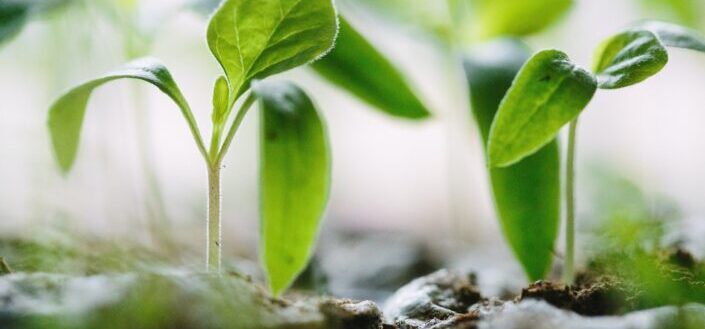
via: Unsplash / Francesco Gallarotti
Now that you're aware of the differences between blueberries and bilberries, it's now time for you to learn how to grow blueberries. Planting blueberries is relatively easy when you are aware of their needs during the different seasons of the year. If you're not that confident about taking care of your blueberry bush during the winter, you don't need to worry. We'll teach you some simple tips to get yourself started.
Step #1: Get your container on the ground.

via: Unsplash / Thomas Thompson
The best way to take care of your blueberry plant is to bury its container deep in the ground during mid-autumn. Make sure to place it away from an area that can experience snow build-up. Before the snow comes, mulch with 4-8 inches of straw and cover the blueberry shrub with a burlap bag.
Step #2: Insulate the pot.

via: Unsplash / Kier In Sight
If you have space restrictions, insulate the root system by covering the outside of the pot in multiple layers of heavy-duty bubble wrap. You can also surround the pot with chicken wire and fill in the spaces with straw or hay. Make sure to leave the shoot system sticking out of the top so it won't rot.
Step #3: Keep the soil moist.
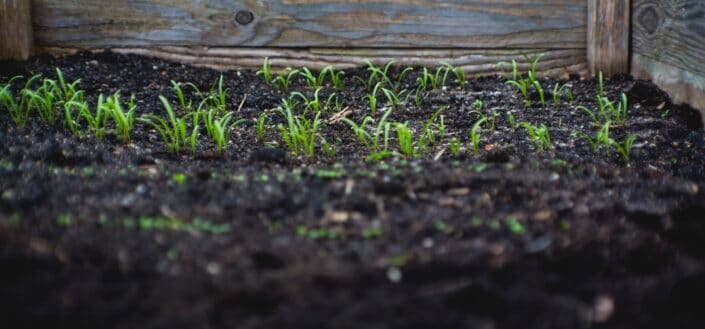
via: Unsplash / Markus Spiske
During winter, the soil might not get the nourishment it needs. Blueberry plants require 1 to 2 inches of water per week. Keep the soil moist by watering regularly. Make sure your container is large and has drainage holes. For more moisture, you can add mulch on top of the earth. Besides watering regularly and adding mulch, another way to retain moisture is to keep the plant away from harsh, drying winds. Place it somewhere where there's none of that.
There you have it! You're now one step closer to starting your own home garden. Keep these tips in mind, and you will be growing not only blueberries but an entire garden full of fresh fruit and vegetables you can consume every day. You'll have a lot of fun with it, for sure!
4 Types Of Blueberries To Grow In Containers

via: Unsplash / Jan-Niclas Aberle
If you've read the article until this point, you now know some basic tips on how to grow your own blueberries. You'll want to know what kind of blueberries you should plant. Each variety has its advantages, and I'll briefly discuss them.
1. Northern highbush blueberries (Vaccinium corymbosum)

via: Unsplash / Michał Bożek
The most common and widely cultivated variety of blueberries globally. The highbush blueberry grows vigorously and is a hardy, durable plant that handles the cold fairly well. They are perfect for cooler climates or northern regions in North America because of this. They also grow abundantly, producing large numbers of aromatic blueberries and self-pollinate, ideal for those with only a limited amount of space to grow them.
2. Southern highbush blueberries (Vaccinium darrowii)

via: Unsplash / Nandita Dhindsa
Southern highbush blueberries are quite similar to their northern highbush varieties in that they are both self-pollinating plants, but instead of cold resistance, they have greater heat tolerance. This makes them ideal for planting in hotter regions or the south. They also ripen in the early spring, faster than the northern blueberry variety, yielding healthy, exquisitely delicious fruit.
3. Lowbush blueberries (Vaccinium angustifolium)

via: Unsplash / Brigitte Tohm
Generally found in the wild, the lowbush blueberry has specialized growing conditions and thus is a bit difficult to cultivate. Still, it's possible to start planting blueberry, though it'll take some effort. The easiest way to know if you've got the right conditions to grow them is to find the berry bush naturally growing in the wild - then, you can remove surrounding vegetation to encourage them to spread. They are acid-loving plants and commonly grow in clay soil. Lowbush blueberries like acidic soil, so use a bit of elemental sulfur or ammonium sulfate to increase soil acidity.
4. Rabbiteye blueberries ( Vaccinium virgatum or Vaccinium ashei)

via: Unsplash / Bartłomiej Jacak
Primarily seen in the south, rabbiteye blueberry varieties, whose most outstanding quality is that there are very few pests that favor them. Because of that, they are a hidden treasure in the gardening community as one of the jewels of the south. They ripen fast, and their fruit is sweet, with good sugar content. You'll want to grow a variety of these plants rather than just a single kind.

via: Golden
Share This Image On Your Site
Frequently Asked Questions

via: Unsplash / Joanna Kosinska
You now know about various blueberry types and how to care for them. You also know the difference between blueberries and bilberries. What are you waiting for? You can start anytime. But, if you still have some miscellaneous questions, I'm here to answer them for you. Let's begin.
Do blueberry bushes produce flowers?
Yes, they do! A full year before flowering, the blueberry bush produces flower buds. The growing season is in the middle months of June until August, and then 90 days after that point, they start to grow berries.
Are there any self-pollinating blueberries?
A lot of varieties of blueberries self-pollinate. They will grow more of themselves with little input from people or methods of spreading pollen, making them ideal for growing multiple times over a year.
Can blueberries be planted in a hanging planter?
Yes, they can! Blueberries can be grown in hanging pots as well. As long as the soil pH level is just right, they can grow even off the ground and make a wonderful decoration to any home that can support their growth.
What is the difference between low chill hours and high chill hours?
Chill hours represent the amount of time cold temperatures last in a region. Naturally, low chill hours are primarily in summery, southern regions with a longer summer, while high chill hours are mostly found in the north, in colder regions.
More Helpful Articles to Read
If you're a budding gardener looking to expand your garden, we have some more helpful articles about plants you can read!
- Want to know how to plant succulents? Here you are!
- How about learning how to grow an avocado tree?
- And finally, would you like to learn how to propagate cacti?
Conclusion
Growing blueberries may seem like a difficult task, but with a few tips and a little bit of know-how, they can be planted in your garden and grow beautifully.








